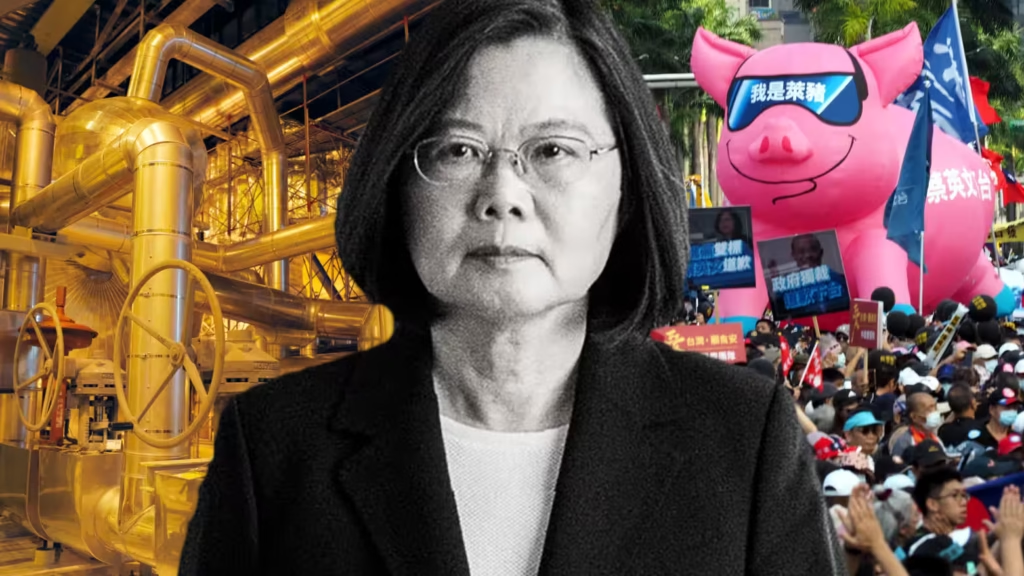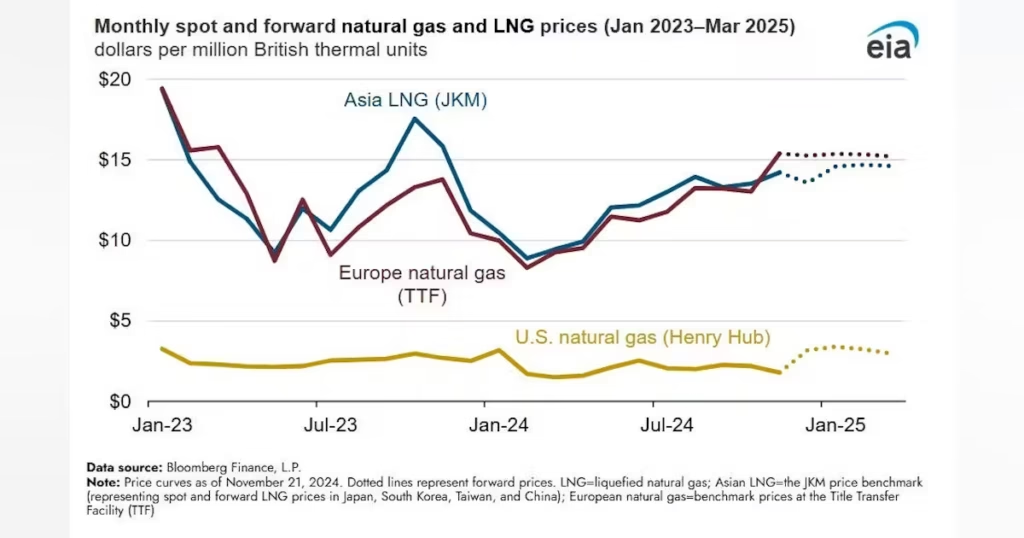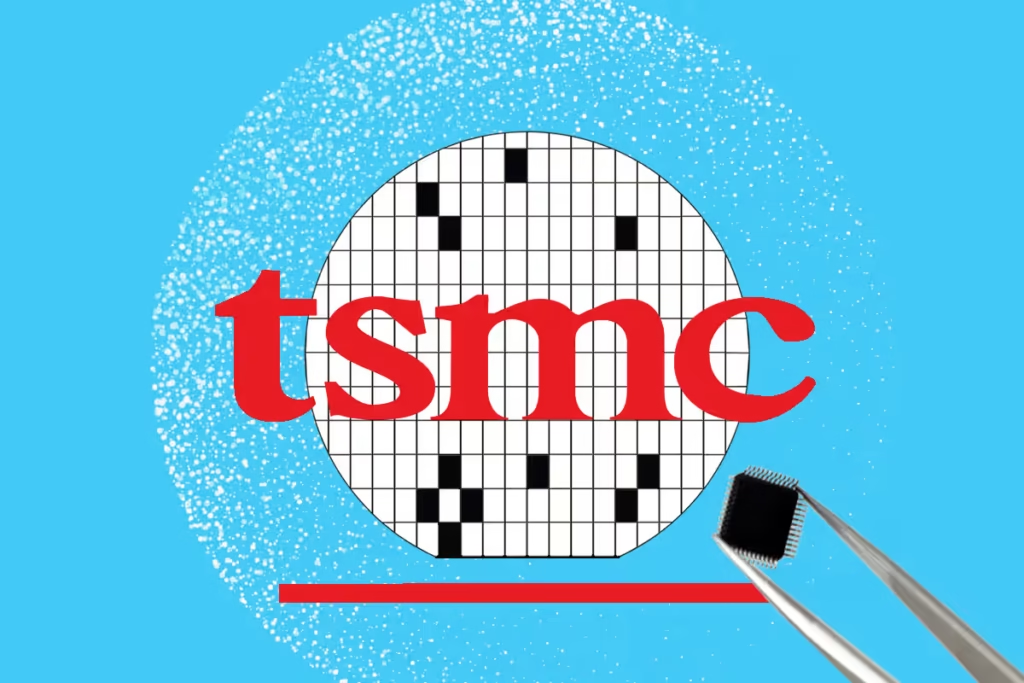What do you get when the world’s smartest chips… meet a country that just unplugged its biggest power source?
Welcome to Taiwan — home of TSMC, the tech giant behind almost every chip in your phone, your car, your laptop.
But here’s the twist: The island building the future of AI… just phased out its last nuclear plant.
AI is booming. Chip production is exploding.
But the energy supply? It’s feeling the pressure — big time.
TSMC already uses nearly 1 in every 10 watts in Taiwan.
By 2030, it could be one in four.
So here’s the question: Can the most advanced technology survive… if there’s not enough power to run it?
This isn’t just a tech story. It’s an energy story.
And it might be the biggest challenge AI has never talked about.
Grab your curiosity. This story’s about to get wired.

Table of Contents
🔌 AI Dreams and Power Schemes
1. On May 24, Taiwan hosted the “AI Trends Insight Summit.”

2. NVIDIA’s CEO, Jensen Huang, emphasized, ‘The biggest challenge for the AI industry over the next decade is energy’—suggesting that energy solutions, including nuclear power, might warrant reconsideration in Taiwan’s context.
3. This statement highlighted concerns about Taiwan’s current energy policies.
4. Since 2016, Taiwan’s ruling party initiated a nuclear phase-out policy.
5. They amended laws to halt new nuclear plant constructions and decided not to extend the lifespan of existing reactors.
6. On May 17, 2025, Taiwan’s last nuclear reactor, Maanshan Unit 2, was shut down, marking the country’s official exit from nuclear energy.
7. This development is noteworthy in light of TSMC’s considerable energy requirements.

⚙️ TSMC’s Power Play

8. As of 2025, TSMC consumes approximately 8% of Taiwan’s total electricity.
9. With ongoing expansions, TSMC is projected to use up to 24% of Taiwan’s electricity by 2030.

10. Beyond TSMC, industrial electricity demand in Taiwan is rapidly increasing.
11. This surge is due to the energy-intensive nature of the semiconductor industry.
12. In May 2024, President Lai Ching-te declared his intention to transform Taiwan into an “AI Island.”

13. However, AI technologies are known for their substantial electricity consumption.
14. Adding AI infrastructure to existing semiconductor operations will significantly increase Taiwan’s electricity demand.
💡Rising Rates and Energy Debates
15. One of Taiwan’s competitive advantages has been its low electricity rates.
16. As of late 2023, industrial electricity rates were approximately 105 NT$ per kWh in Taiwan.
17. Nighttime rates were about 70 NT$ in Taiwan; for large-scale factories requiring ultra-high voltage, rates were 66–88 NT$ in Taiwan.
18. For a monthly industrial consumption of 10 million kWh, electricity costs would be around 1.05 billion NT$ in Taiwan.
19. Despite appearing low, Taiwan’s electricity rates have been increasing.

20. Industrial electricity rates rose by 15% in 2022 and 17% in 2023.
21. This upward trend continued beyond 2024.
22. In 2024, rates increased by an average of 15%, with a projected 10% hike in 2025.
23. Notably, semiconductor companies like TSMC faced a 25% rate increase in 2024.

24. The government minimized residential rate hikes while imposing higher increases on industrial users.
25. By 2024, Taiwan’s industrial electricity rates remained 10–15% lower than some neighboring countries.
26. However, with additional hikes in 2025, this gap is expected to narrow significantly.
27. Consequently, TSMC’s cost advantage over competitors may diminish.
🌍 Energy Mix and Natural Challenges
28. The push for nuclear phase-out began in 2016.

29. In January 2016, the ruling party took power and initiated the phase-out policy.
30. After a series of earthquakes in the region, the government announced plans to decommission all nuclear plants by 2025.

31. The goal was to replace nuclear energy with a mix of 50% liquefied natural gas (LNG), 30% coal, and 20% renewables.
32. At the time, Taiwan had six operational nuclear reactors, with a new plant under construction in New Taipei City.

33. Between 2019 and 2024, five of the six reactors were sequentially shut down.
34. Construction of the nearly completed new reactor was halted.
35. By early 2025, only Maanshan Unit 2 in Pingtung County remained operational.
36. This last reactor was shut down in May 2025.
37. Before the phase-out, nuclear power accounted for 20% of Taiwan’s electricity; now, it’s 0%.
38. While the nuclear phase-out proceeded as planned, renewable energy generation has fallen short of expectations.
39. The target was 20% renewables by 2025, but as of 2024, the share is only 11.6%.
40. With coal power also being reduced for environmental reasons, Taiwan now relies on LNG for approximately 42% of its electricity.

41. Global events have driven up LNG prices, increasing deficits for Taiwan Power Company (Taipower), which imports 100% of its LNG.

42. Due to concurrent presidential and legislative elections in 2024, the government was hesitant to raise residential electricity rates.
43. As a result, industrial users bore the brunt of rate increases.
⚠️ Power Struggles and Future Hurdles
44. While TSMC’s profit margins might absorb higher electricity costs, power outages present operational challenges.

45. When the power reserve margin drops below 10%, the likelihood of blackouts increases.
46. With the last nuclear plant shut down, Taiwan’s reserve margin has fallen to around 7%.
47. In June 2024, a major blackout affected Taipei, impacting companies like NVIDIA and Foxconn.
48. Since 2019, Taiwan has experienced four large-scale blackouts, each affecting millions of households.
49. President Lai Ching-te recently formed a National Climate Change Committee, including members advocating for reconsidering the nuclear phase-out.

50. However, discussions about restarting nuclear energy are deferred until after his term ends in 2030.
51. Even if discussions begin, restarting nuclear projects would be challenging.
52. Since the phase-out announcement, nuclear engineering departments have closed, and experienced personnel have moved abroad, leading to a talent shortage.
53. Taiwan’s decision to phase out nuclear energy is partly due to its high seismic activity.
54. The island experiences frequent and severe earthquakes, similar to Japan.

55. Since 2024, the frequency of earthquakes in Taiwan has increased.
56. On April 3, 2024, Taiwan experienced its strongest earthquake in 25 years, off the Pacific coast.
57. On January 21, 2025, a magnitude 6.4 earthquake damaged 60,000 TSMC wafers, with aftershocks continuing.

58. Another magnitude 5.6 earthquake occurred on January 30, 2025.
59. Recent seismic activity has raised concerns about the possibility of future significant earthquakes.
60. Given its seismic risks, Taiwan faces challenges in deciding on nuclear energy policies.
61. Due to power shortages, approvals for new data centers have been halted, affecting industrial growth.
62. Beyond industry, energy security has broader implications.
63. Taiwan has increased LNG imports to compensate for the nuclear phase-out.
64. However, LNG’s properties make it difficult to store long-term.
65. Taiwan’s LNG storage capacity covers only about 11 days of demand.

66. In the event of prolonged supply disruptions, Taiwan could face severe energy shortages.
67. This reliance on LNG highlights Taiwan’s energy vulnerability, especially amid regional tensions.

Brilliant Chips, Blinking Lights: Taiwan’s Silent Trade-Off

So here’s the plot twist: Taiwan, the brain behind the world’s smartest chips, is starting to feel the strain —— not from global rivals, but from its own power grid. Electricity is getting expensive. Supply is getting tight. And that combo? It’s starting to look likethe pressure point of an otherwise unstoppable tech powerhouse. In today’s world, energy isn’t just a utility — it’s strategy. And Taiwan’s energy strategy is walking a very thin wire. Even NVIDIA CEO Jensen Huang has weighed in, noting that if AI is to shape the future, rethinking energy strategies may be essential. But building big traditional nuclear plants on an earthquake-prone island? That’s not exactly plug-and-play. The ground really moves. That’s why Small Modular Reactors — SMRs — are quietly gaining attention. They’re safer, more flexible, and way more realistic for a place that needs energy security without seismic anxiety. Because here’s the truth: this isn’t just about chips, or AI, or even tech. It’s about power. And in the race to build the future, Taiwan’s next big breakthrough might not come from a lab, but from a power grid. Taiwan has the brains. Now it needs the juice.
Discover more from Alphazen Dynamics
Subscribe to get the latest posts sent to your email.



